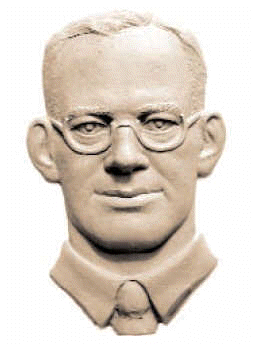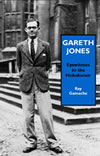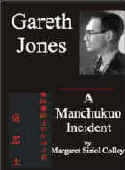Gareth Jones
[bas relief by Oleh Lesiuk]
HOME |
Stop Press |
Complete Soviet Articles & Background Information |
Précis of Gareth's
|
All Published Articles |
BOOKS
|
|
|
|
More Than Grain of Truth(2005) |
|
|
TOPICAL
'Are you Listening NYT?' U.N. Speech - Nov 2009 |
Gareth Recognised at Cambridge - Nov 2009 |
Reporter and the Genocide - Rome, March 2009 |
Order of Freedom Award -Nov 2008 |
Premiere of 'The Living' Documentary Kyiv - Nov 2008 |
Gareth Jones 'Famine' Diaries - Chicago 2008 |
Aberystwyth Memorial Plaque 2006 |
GENERAL
Scholarship Fund |
Site Map |
Links |
Legal Notices |
Sponsored Links |
Contact |
|
About four o’clock, we saw a great sight - over 1000 horses on the plain. They all stick together side by side affectionately. This is against the wolves that will kill them. In Outer Mongolia, they reckon five percent die from the wolves that even kill big horses. A few dark blue tents had been pitched. It was Mr Purpis’ Horse Camp where he had 1250 horses. There we were to camp for the night. It was like the Wild West! A number of Mongol horsemen were there and a great performance began. Mr Purpis was to choose some of the best horses to bring to Kalgan. Mr Larsen and he directed the Mongol horsemen to choose one out of the wild horses. The Mongol armed with a long whip, which was also a lasso, would descend on the chosen horse that would then fly away. A great race would follow, the Mongol catching the fugitive horse, throwing the whip-lasso round his neck and bringing him to a stop. Five or six Mongols on foot - very plucky - on this horse being brought back –would leap on the horse or hold him by the mane and tail. Then another Mongol would brand the wild horse with “P” for Purpis. Then supper - soup with big lumps of mutton - cooked by the Russians. We ate it in wooden Mongol bowls. We then slept in tents. We woke up early the next morning (Saturday July 13th) after a good sleep. It was a cold morning and we could hear the sound of horses’ hooves and those of camels. We had kippers for breakfast and then watched more horses caught by the Mongols. Then one car with Plessen, Müller and myself left towards the palace of Prince Teh Wang at Pai Ling-miao. “This is puzzling,” said Plessen: “When one is invited for a weekend in England, one knows what to expect. But a weekend at the palace of a Mongolian prince! I just can’t picture what it is going to be like”. We drove bouncing up and down over the Steppes. There was no road and the sensation was that of an aeroplane. The ground was sandy with heaps of flowers. We saw one lone rider and sheep grazing. Müller said: “That’s where the aeroplanes land. The Japanese planes come very often. The Japanese have wireless stations (sending and receiving at all places) and motorcars and aeroplanes connect all stations. In Teh Wang-fu there is a Japanese hospital and they are planning to develop roads there. |
Gareth at the Lama service. |
|
|
|




